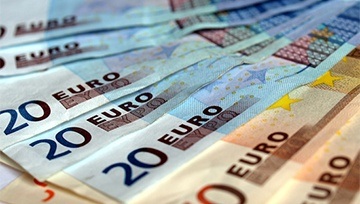What is the Euro?
The Euro (EUR) is the official currency of the Eurozone, a monetary union with 19 out of the 28 member states of the European Union (EU). It was established in 1999 with the intention of creating a single economic block that shared a common currency among all of its members.
The European Central Bank (ECB) is the steward of the euro and uses monetary policy to drive inflation and interest rates to desired levels that also support economic growth and job creation in the EU. In 1998, the ECB quantitatively defined its official mandate of price stability as maintaining inflation rates below but close to 2% over the medium term. In July of 2012, ECB President, Mario Draghi, famously added the safeguarding of the euro as an unofficial objective, saying policy officials will “do whatever it takes” to prevent its failure.
The establishment of the euro is part of the broader European integration project that is meant to build a politically unified regional entity that is tied together through economic strings. The EU seeks to create a “single market” by guaranteeing the free movement of goods, capital, services, and labor, the so-called “four freedoms”.
The EU eventually became the second largest economy in the world with a consumer base of over 500 million with the euro rising to the rank of being the second most traded currency on the global market. Therefore, owning the euro, allows traders to have exposure to the EU’s market and possess a highly liquid currency.
Build confidence in your Euro trading strategy with our free guide!
What moves the EURO?
I. Eurozone Political Risk
Risk in political stability plays a significant role in influencing the euro price trend. Leading up to the Great Recession in 2008, a debt crisis was brewing in Europe. When the economic shock hit Europe, a few Southern European states (such as Greece) who were already burdened with high levels of debt, became a political and economic liability for the whole union.
There were doubts on the ability of these states to pay back their debt, so monetary authorities such as the ECB and IMF issued bailouts to these states in an effort to prevent a regional economic collapse. Even though loans were issued, the economic impact of this crisis has had broader political implications that have exerted a significant influence on the price of the euro.
The recent emergence of Eurosceptic nationalist movements across Europe has caused the currency to depreciate as markets became uncertain as to whether the Eurozone would be pushed into a deeper crisis than before.

II. ECB Monetary Policy
The ECB also impacts the euro price trend. As the custodian of the euro, the ECB is tasked with maintaining price stability and maintaining inflation rates below but close to 2% over the medium term. The central bank can use conventional policy instruments such as interest rate hikes/cuts, and open market operations among other monetary levers to achieve their target. The ECB can also use non-standard policies such as Quantitative Easing (QE) and asset purchase programs that emerged after the subprime mortgage crisis in 2008.
The central bank also holds press conferences where markets can approximate the direction of interest rate hikes or cuts based on hawkish or dovish rhetoric from ECB officials. Additionally, indicators of economic activity such as Eurozone GDP, German and French CPI reports, along with PMI surveys, have a noteworthy effect on the euro.
Unexpectedly positive or negative data from these various indices has a tendency to lead markets to speculate on potential hawkish or dovish shifts in policy from the ECB. Consequently, this market-driven speculation often leads to price fluctuations in the euro.

Trading the EURO
The most popular currency to pair with the euro is the US Dollar (EUR/USD). Both currencies represent the largest economic blocs with most of the world’s economic activity facilitated in euros and dollars. The sheer volume of transactions done in these currencies makes them highly liquid.
As a result, a large amount of forex trading will involve the euro and the various other currencies it pairs with. In 2016 the euro commanded over 31% market share of overall FX turnover. When paired with the USD, the EUR/USD currency pair becomes one of the most liquid financial instrument in the world. Because of the euro’s high liquidity, the bid-ask spread can be one of the lowest out of any currency pair.
Additionally, the wide range of available high quality economic and financial data allows traders to build robust and well-informed euro trading strategies. This will enable traders to analyze the various economic factors that may trigger a market movement and impact the euro price – allowing them to strategize accordingly.
Commonly traded EUR currency pairs:
--- Written by Dimitri Zabelin, Jr Currency Analyst for DailyFX.com
To contact Dimitri, use the comments section below or @ZabelinDimitri on Twitter
EURO TRADING RESOURCES
- Join a free Q&A webinar and have your trading questions answered
- Just getting started? See our beginners’ guide for FX traders
- Having trouble with your strategy? Here’s the #1 mistake that traders make






